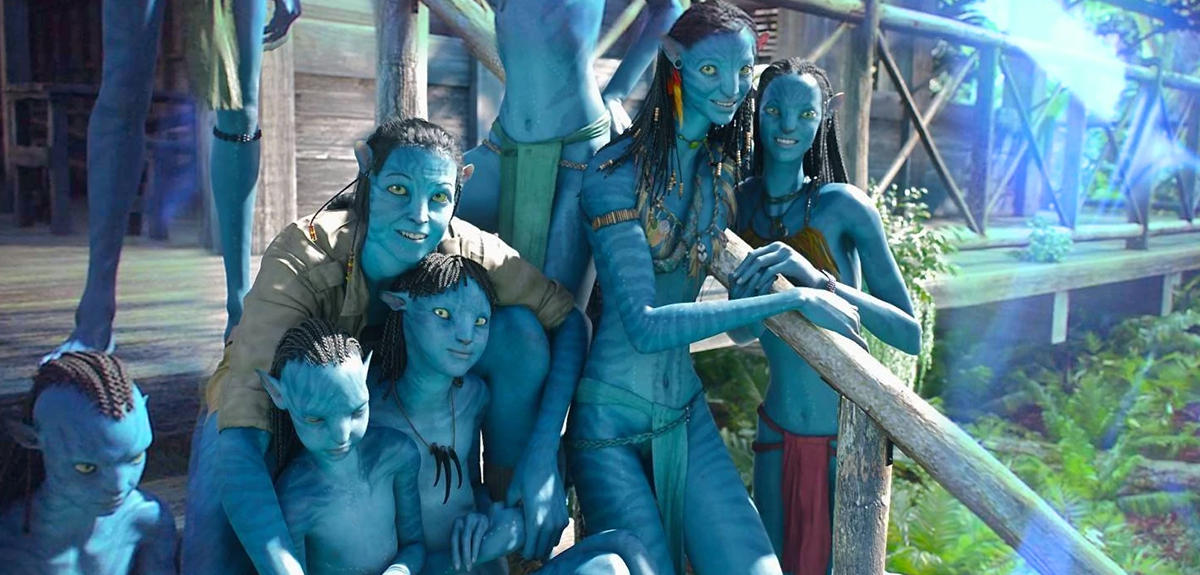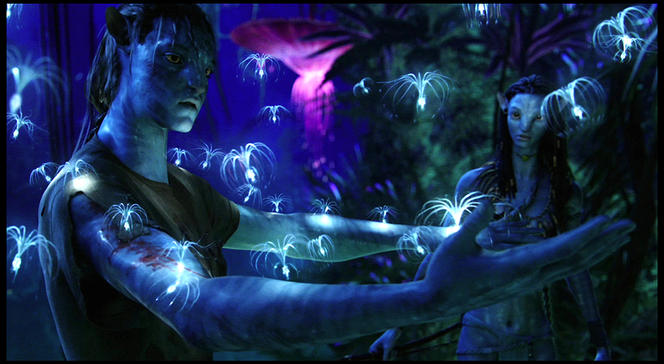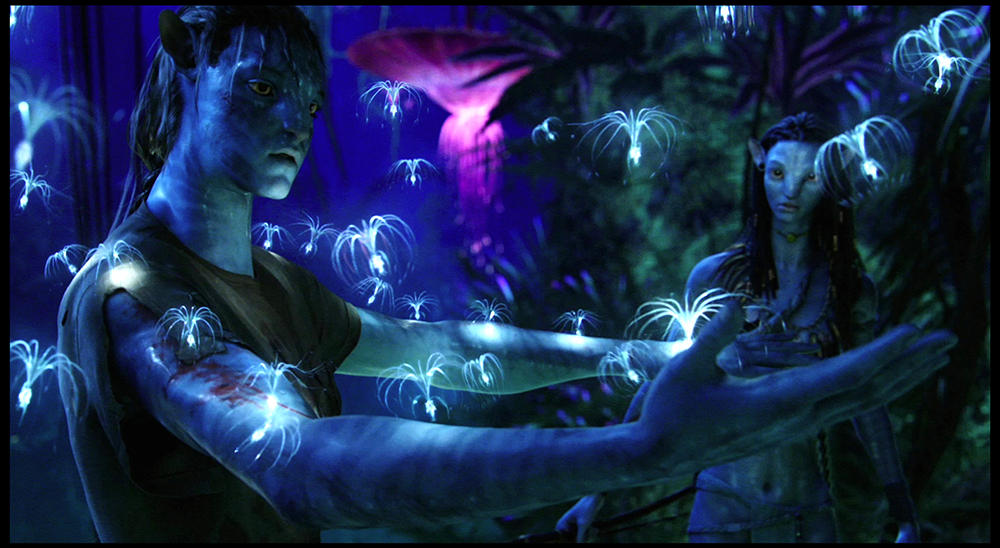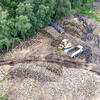You are here
“Avatar depicts two strikingly different forms of ecology”

The film Avatar, an ecological fable in which the Na’vis, a blue-skinned species of extra-terrestrials, are at war with Earthling invaders, was released in 2009 and became the biggest box office success of all time. What is the conception of life depicted in the film?
Perig Pitrou:1 The film’s most salient quality is the way it presents singularities that are both biological and sociotechnical. First of all, the endless parade of unknown life forms – animals, plants, humanoids, etc. – in a rich, bountiful environment, reveals the ecology of the imaginary planet Pandora, in particular the existence of communication systems among different species that are like nothing on Earth.
Secondly, Avatar shows what this communication implies in political and social terms. The species live in harmony – humanoid riders develop a permanent organic bond with the animals they ride, trees speak to the living and even to the dead… The diversity of the life forms becomes a pretext to plunge the viewer into an animist world, radically different from the precepts of Western thinking. The arrival of humans on this planet, in the form of a predatory military-industrial complex, further accentuates this contrast. They do not understand what they see and try to impose their vision of the universe.

In other words, the film advocates a change of perception…
P. P.: Avatar echoes the work of the anthropologist Philippe Descola, especially his most influential book, Beyond Nature and Culture (Gallimard, 2005; The University of Chicago Press, 2013). It’s interesting to note that the two came out just a few years apart – the idea was in tune with the times… In his book, Descola recounts how studying Amazonian populations and other traditional societies makes it possible to shift our perceptions. In the Western world, we have what he calls a ‘naturalist’ vision: we see physical similarities between humans and non-humans – all living beings are made up of DNA, cells, etc. – but we believe that our own inner spiritual life is richer and more elaborate.
The animist ontology, which Descola investigated in Amazonia but which can also be found in other parts of the world (Southeast Asia, the Arctic…) takes the exact opposite view. Humans consider that they share the same spiritual interiority as all of the world’s creatures, and that differences among them are mainly physical and biological. In addition, Descola is a staunch defender of indigenous peoples’ rights and environmental causes – a central theme in Avatar.

How are these different approaches important in your field of expertise, the anthropology of life?
P. P.: The idea is to understand what ‘life’ represents in different cultures. All societies are spontaneously confronted with birth and death, sickness and health, the growth and development of living beings. Any thinking person inevitably notices and wonders about these phenomena. Yet looking at the broad explanations proposed by humans – via religion, science and even arts – one is fascinated by their extraordinary diversity. Depending on whether someone comes from France, Japan or Mexico, whether they grew up in a modern society or a more traditional community, they do not necessarily have the same definition of life. They don’t recognise the same entities as living or, on the contrary, inanimate.
The challenge is to analyse what these different representations imply in terms of social and political organisation, our relations with nature and technological innovation… Depending on our conceptions of life and life forms, we do not develop the same practices in hunting, agriculture or the urbanisation of large spaces. Anthropologists conduct comparative studies in every region of the world in an attempt to better understand these connections.
How did science fiction become one of your areas of research?2 At first sight, it could seem an odd choice for an anthropologist…
P. P.: Taking an interest in representations of life also means looking inward at our own society, our culture. What conception of life is mobilised, consciously or subconsciously, in the research laboratories? What do biologists or chemists have in mind when they talk about ‘living beings’? These are fundamental questions because we need to imagine organisms that could be completely different from what we know on Earth, but that are nonetheless ‘living’. This is down to exobiology, an interdisciplinary approach to studying the conditions of the emergence of life and its evolution in the Universe. Science fiction is a fascinating resource in this regard because it depicts extra-terrestrials in their natural – as well as their social, political and technological – environment. It enables us to examine the links between biology and culture in the general sense of the term.
Getting back to Avatar, was the ecological message of the 2009 film ahead of its time?
P. P.: One could say that it argued in favour of a reconnection with nature, better conservation of the environment and greater respect for the rights of indigenous peoples – messages that have become all the more prominent and pressing today. That said, as an anthropologist I find it especially interesting to examine the contrast between two forms of ecology that feature in the first instalment: one naturalist and the other animist, to use Descola’s terminology. The film begins with an aerial view of a virgin jungle devoid of human activity, followed by a panoramic shot of a spaceship – which is, by contrast, the most anthropic medium imaginable!
Avatar constantly portrays this contrast between two living environments and the social models that they spawn. The social order among the humans, for example, is very hierarchical, often dominated by virile men. Everything depends on the capacity of a few individuals to control material resources – in particular a precious ore that can only be found on Pandora. Conversely, for the planet’s natives, especially the Na’vis, the main humanoid species, the political organisation seems more egalitarian and less anchored in gender stereotypes (women can also be warriors and commanders). The energy is essentially spiritual and communal.
Is this opposition a reference to actual events, in the history of colonialism for example?
P. P.: The Na’vis populations are clearly inspired by non-Western traditional societies that have often been the victims of colonisation. Avatar presents an important facet of their history, i.e. ‘extractivism’, the extraction of large quantities of natural resources from a colony to meet the needs of the colonising country. For example, one of the film’s first scenes is an aerial shot of the activity taking place around mines, with huge craters and multi-level trucks hauling freight.
The Na’vis are not there, but they live above an especially promising ore deposit, which is why the humans want to expel them. The Earthlings first try to negotiate through ‘avatars’ – hence the title of the series. When this solution fails, armed conflict becomes a looming threat. Of course, this message is not always subtly conveyed in the film, which also seeks to entertain, building dramatic tension and eliciting emotions.
Avatar: The Way of Water, the second chapter of the franchise, has just been released. What do you expect to see in this new film?
P. P.: Despite its flaws, the first opus had the virtue of addressing a number of issues that are still topical today, and in fact even more so than when Avatar was released in 2009. It’s what is sometimes called ‘a world work’: endowed with an exhaustive, recapitulative dimension, it presents an alternative Universe, at once radically strange and yet recognisable, which is the best way to make us aware of own. Watching the trailer for The Way of Water, I must admit that I had the feeling that the originality of the first film had perhaps been lost. I was struck by the highly “instagrammable” nature of the images of paradisiacal islands and undersea diving. The wild, hostile jungle seems to have given way to dreams of luxury tourism… It’s nice to watch, of course, but there should be more to it! Still, I can’t judge based on a trailer of only a few minutes. I keep hope that this second instalment will also capture part of the contemporary mindset, and reflect our own representations of the world.
Further reading: Les Anthropologues et la Vie (“Anthropologists and Life”), Perig Pitrou, Mimesis, August 2022, 256 p., €20. Puissance du végétal et cinéma animiste. La vitalité révélée par la technique (“Plant Power and Animist Cinema. Vitality Revealed by Technology”) Teresa Castro, Perig Pitrou and Marie Rebecchi (ed.), Les Presses du Réel, Sept. 2020, 312 p.
- 1. Perig Pitrou is a CNRS research professor at the Maison Française d’Oxford (UK). He heads the Laboratory of Social Anthropology, (LAS – CNRS / Collège de France / EHESS-PSL). After participating in the Université PSL programme “Origins and Conditions of Life”, he is now a member of the executive board of the “Origins” priority research equipment and programmes (PEPR).
- 2. For several years, along with the astrophysicist Roland Lehoucq and the palaeontologist Jean-Sébastien Steyer, Pitrou headed a film club devoted to the discovery of new life forms in science fiction.
Explore more
Author
Fabien Trécourt graduated from the Lille School of Journalism. He currently works in France for both specialized and mainstream media, including Sciences humaines, Le Monde des religions, Ça m’intéresse, Histoire or Management.











